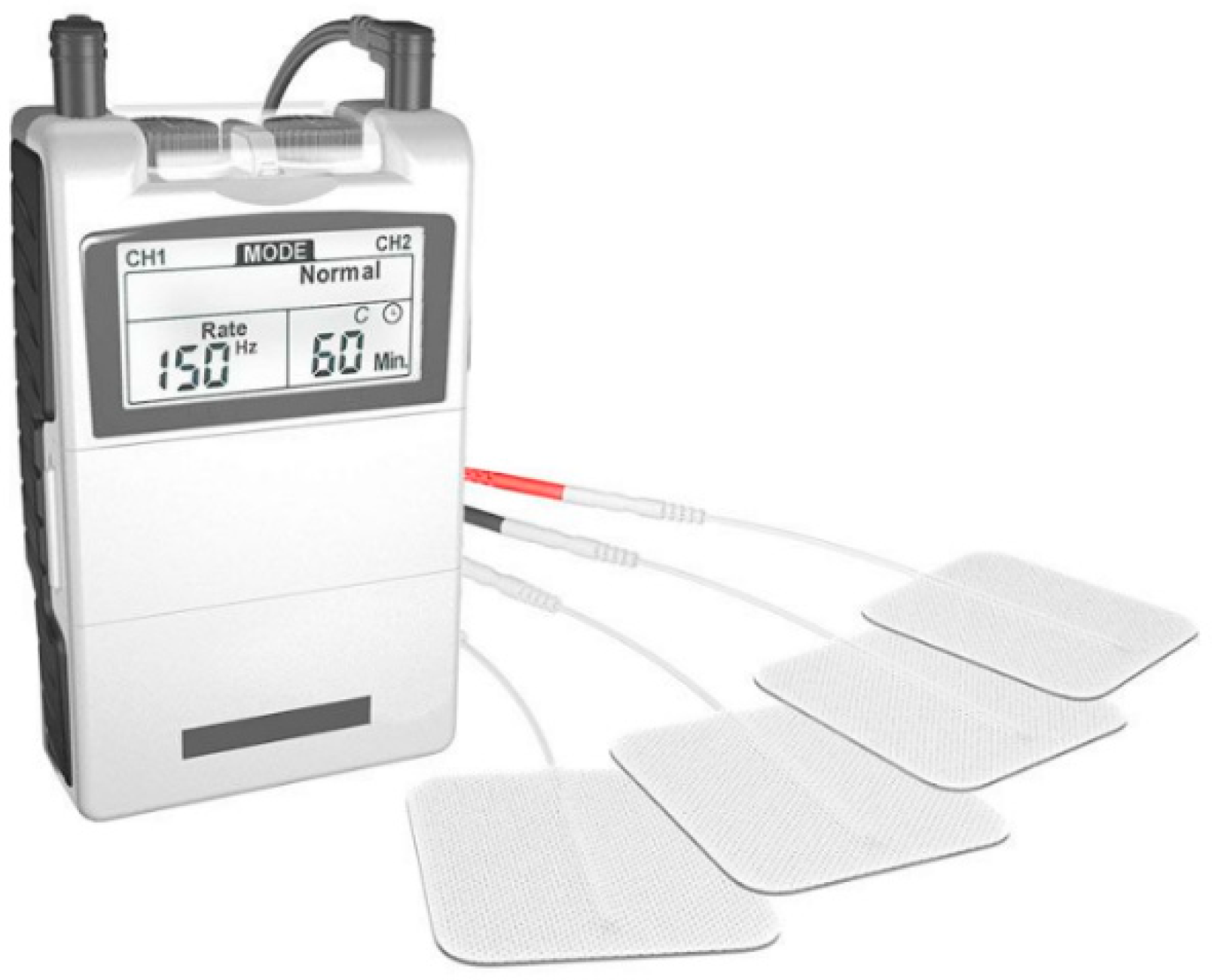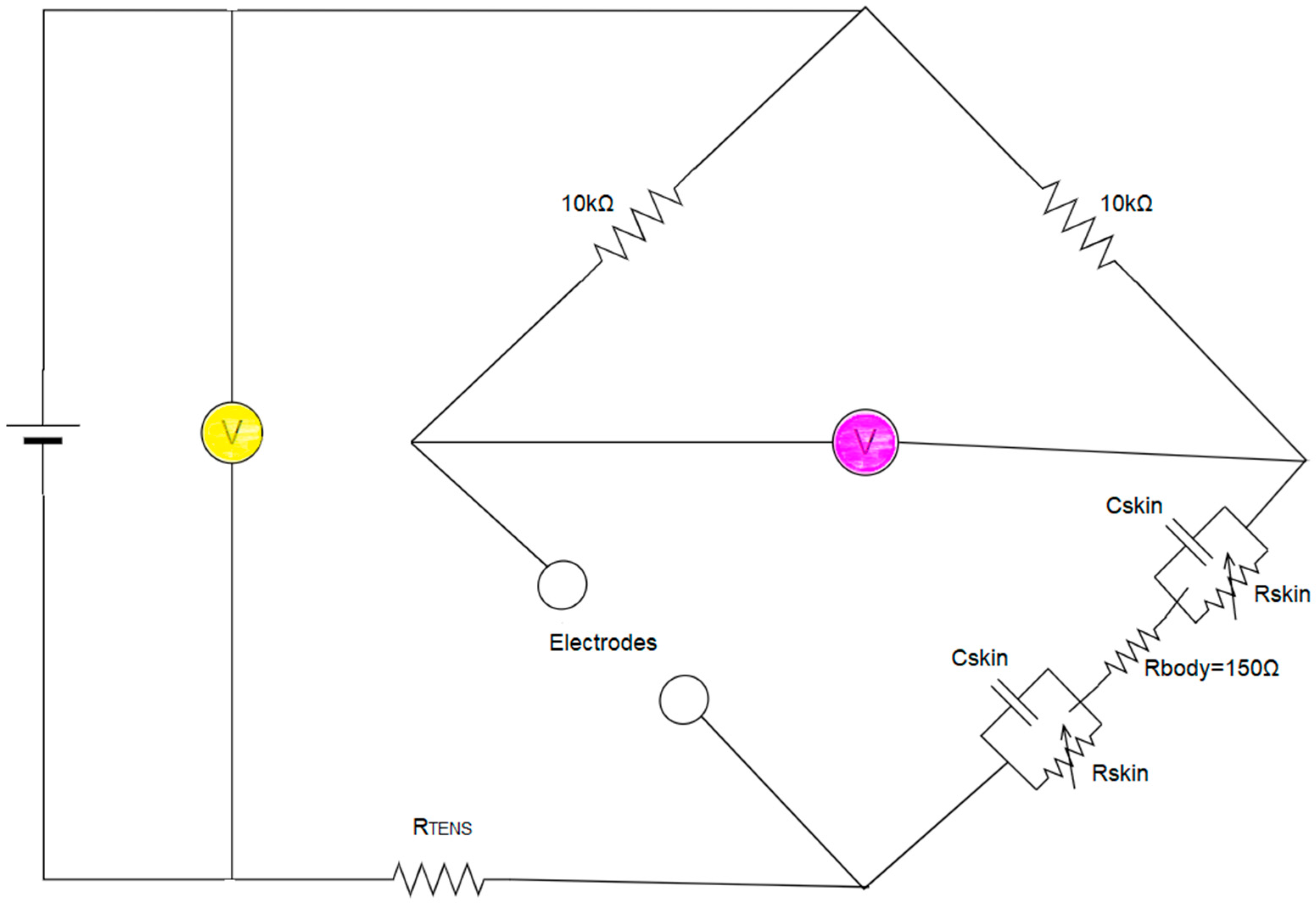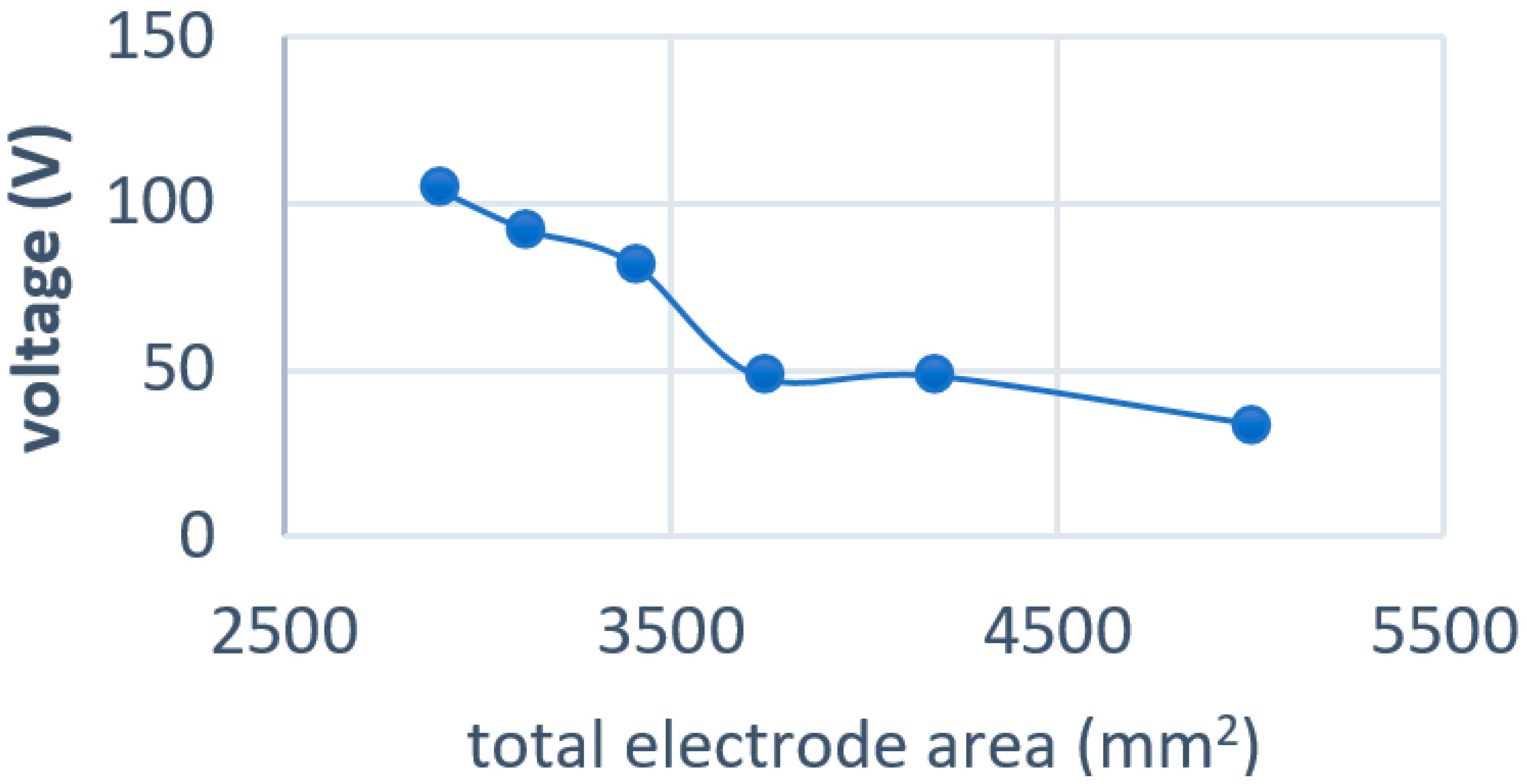Wearable FES Electrodes †
Abstract
:1. Introduction
2. Materials and Methods
2.1. The Commercial Stimulator
2.2. Measurement of Skin/Electrode Impedance Using a Wheatstone Bridge
3. Results
3.1. Relationship between Electrode Size and Voltage
3.2. Testing Textile Electrodes
3.3. Impedance Values for the Skin/Electrodes Assembly

4. Concluding Remarks
Reference
- Lawler, J.C.; Davis, M.J.; Griffith, E.C. Electrical Characteristics of the Skin. J. Investig. Dermatol. 1960, 34, 301–308. [Google Scholar] [CrossRef] [PubMed]




| Dimension Anode (cm2) | Dimension Cathode (cm2) | Voltage (V) | |
|---|---|---|---|
| gel electrodes (anode + cathode) | 15 | 15 | 33.6 |
| 6 | 15 | 104 | |
| Screen printed electrode (anode) and gel electrode (cathode) | 15 | 15 | 49 |
| 6 | 15 | 110 |
Publisher’s Note: MDPI stays neutral with regard to jurisdictional claims in published maps and institutional affiliations. |
© 2019 by the authors. Licensee MDPI, Basel, Switzerland. This article is an open access article distributed under the terms and conditions of the Creative Commons Attribution (CC BY) license (https://creativecommons.org/licenses/by/4.0/).
Share and Cite
Tyler, D.; Mavridis, C. Wearable FES Electrodes. Proceedings 2019, 32, 13. https://doi.org/10.3390/proceedings2019032013
Tyler D, Mavridis C. Wearable FES Electrodes. Proceedings. 2019; 32(1):13. https://doi.org/10.3390/proceedings2019032013
Chicago/Turabian StyleTyler, David, and Clémentine Mavridis. 2019. "Wearable FES Electrodes" Proceedings 32, no. 1: 13. https://doi.org/10.3390/proceedings2019032013




